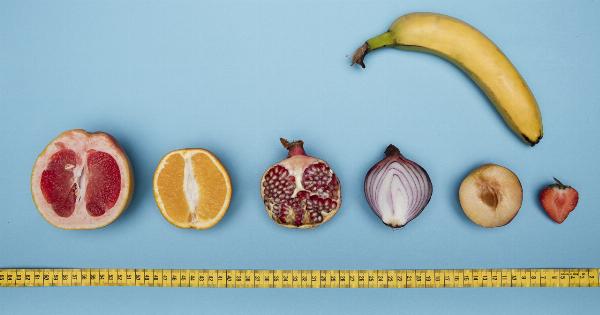When it comes to female sexuality, there has long been a debate about the different types of orgasms women can experience. The two main types that are often discussed are vaginal and clitoral orgasms.
While some argue that they are two distinct types of orgasms, others believe that they are simply different pathways to the same physical and emotional release. In this article, we will explore the similarities and differences between vaginal and clitoral orgasms, as well as the ongoing debate surrounding their existence.
The Anatomy of Pleasure
Before we delve into the intricacies of vaginal and clitoral orgasms, it is important to understand the female sexual anatomy.
The clitoris, often referred to as the “pleasure button,” is a sensitive organ located at the top of the vulva, just above the urethra. It contains thousands of nerve endings and is highly responsive to stimulation. The vagina, on the other hand, is the muscular canal that connects the uterus to the external opening.
Clitoral Orgasms
Clitoral orgasms are often considered the most common and reliable type of orgasm for women. This type of orgasm is typically achieved through direct stimulation of the clitoris, either through manual stimulation, oral sex, or the use of vibrators.
The clitoral orgasm is characterized by intense pleasure and a release of tension, often accompanied by contractions of the pelvic muscles.
Experts agree that the clitoris is the primary source of sexual pleasure for women. It has a high concentration of nerve endings and is solely dedicated to sexual arousal.
The clitoral structure extends internally, forming two shafts and bulbs that surround the vaginal canal. This interconnectedness may explain why some women report experiencing orgasms that are a combination of both clitoral and vaginal stimulation.
Vaginal Orgasms
Vaginal orgasms, also known as G-spot orgasms, are said to originate from stimulation of the G-spot, an erogenous area located on the anterior wall of the vagina, about two inches in.
This area is thought to be composed of erectile tissue and has the potential to induce powerful orgasms when properly stimulated.
Unlike clitoral orgasms, vaginal orgasms are often described as more deep and whole-body experiences. Some women report feeling a sense of release and emotional connection during a vaginal orgasm.
However, it’s worth noting that not all women are able to achieve orgasms through vaginal stimulation alone. In fact, some individuals may not even have a G-spot or may have a less sensitive G-spot compared to others.
The Debate
The debate surrounding vaginal and clitoral orgasms centers around two main arguments. On one side, there are those who believe that these orgasms are separate and distinct, each with its own unique sensations and qualities.
Supporters of this view argue that the clitoris and vagina are connected but operate independently in terms of pleasure and orgasmic response.
On the other side of the debate, there are those who propose that vaginal and clitoral orgasms are not mutually exclusive.
They argue that the clitoris and the G-spot are interconnected structures, suggesting that stimulation of one area can indirectly activate the other. This perspective suggests that the orgasms experienced through different types of stimulation may be more closely related than previously thought.
Exploring Pleasure Pathways
Research on female orgasmic response is still evolving, and there is no definitive answer to the great orgasm debate. However, it is becoming increasingly clear that women can experience pleasure and orgasm through a variety of pathways.
Some may find clitoral stimulation to be the most effective, while others may discover that vaginal or blended orgasms offer the most satisfaction.
The important thing to remember is that sexual pleasure is highly individual and can vary greatly from person to person. What works for one woman may not work for another.
Experimentation, communication, and a willingness to explore one’s own body are essential in discovering what brings pleasure and satisfaction.
The Role of Mental and Emotional Factors
While the physical aspects of sexual stimulation are important, it is crucial not to overlook the role that mental and emotional factors play in the orgasmic experience.
Factors such as stress, relationship dynamics, body image, and self-esteem can all impact a woman’s ability to reach orgasm, regardless of the type of stimulation.
Creating a safe and comfortable environment free from judgment and pressure can greatly enhance sexual pleasure.
Open and honest communication with partners can also help to bridge any gaps in understanding and ensure that both individuals’ needs are met.
Conclusion
The debate between vaginal and clitoral orgasms continues to intrigue researchers and individuals alike.
While the existence of distinct orgasmic pathways remains unclear, what is certain is that women have the capacity for intense pleasure and orgasm through a variety of sources. Whether it’s through clitoral stimulation, vaginal penetration, or a combination of the two, the ultimate goal should be to prioritize pleasure, exploration, and fulfillment in one’s sexual experiences.




























